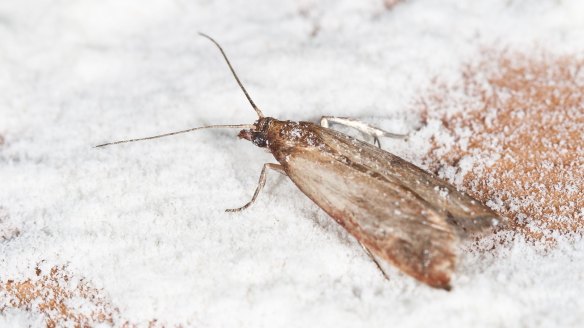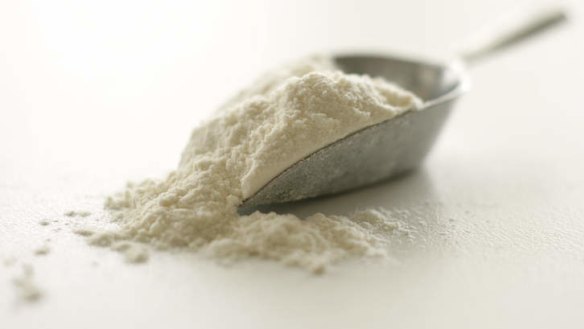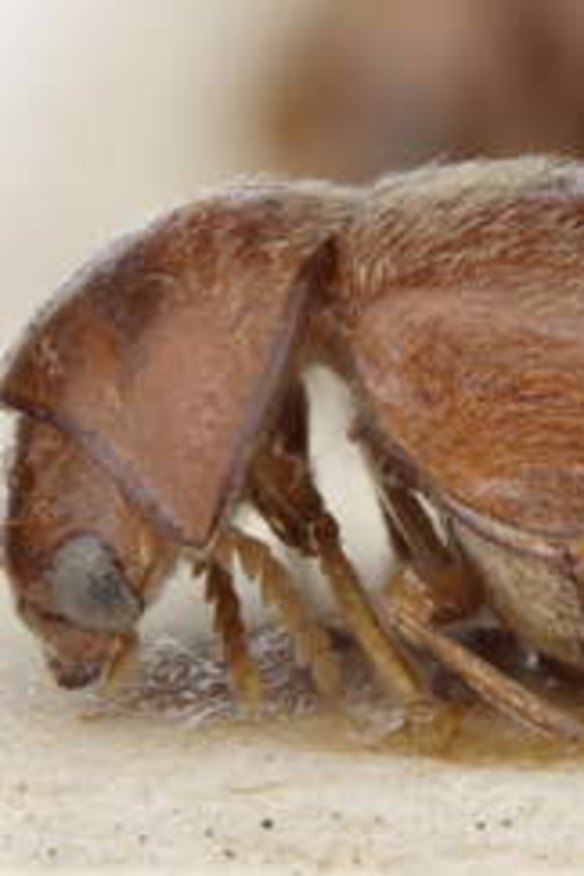How to get rid of pantry moths (and what happens if you accidentally eat one)

Chocolate, nuts, dried fruit, rice, pasta. There's not much inside a pantry that an Indian meal moth larvae won't snack on, given the chance.
The tiny two-toned moth is pantry enemy No.1 among the pests Museum Victoria's senior curator of entomology, Ken Walker, is called on to identify.
"There's about 20 'cosmopolitan pests' that have been transported by man around the world and they now occur in every continent, in every capital, in every city, and most likely, in almost every pantry from time to time," says Dr Walker.

In his 32 years with the museum, Dr Walker has fielded tens of thousands of inquiries from farmers, pest companies, pathologists and householders and has amassed a collection of three million specimens.
Yet most of the damage done in the pantry is the work of four pests: the Indian meal moth, the Mediterranean flour moth, the cigarette beetle and the drugstore beetle (see below).
While these insects are a nuisance and do degrade food, they don't carry diseases, viruses or cause any human health problems. "Indeed, when you eat them you're getting a little bit of protein," says Dr Walker, chuckling.

This gang of four will get into almost anything, usually arriving as eggs on food, then completing their life cycle in the pantry. Freezing nuts, dried fruit and grains overnight before storing them in the pantry will kill off larvae but it's not guaranteed to kill eggs.
The first signs of infestation are often powder on grains, nuts or pulses, pale, wriggling caterpillar-like larvae or small web-like cocoons inside packaging.
"You mostly see the larvae and then you see the adults, but of course by the time you see the adults, the damage has been done," says Dr Walker.

He suggests removing everything from the pantry a shelf at a time, and examining the food for signs of infestation. Pests often attack food that's a bit stale, so it's a good opportunity to do pantry stocktaking.
Spring is an ideal time to tackle the job. Insects are cold-blooded and although they're active year-round, their life cycle speeds up in warmer weather.
Throw out infested products and put everything else into sealed plastic containers. Despite common belief, these pests can't chew through plastic, but they can get in through extremely small holes – or they have been inside all along.

"The last thing you want to be doing is spraying inside where your food products are," says Dr Walker.
Before returning items to the pantry, clean the shelves with warm water to dislodge any pupae, which tend to be hidden in corners, cracks and hard-to-reach places.
"All it needs is a crack down the back of the shelves and they'll get down there. They're extremely difficult to get rid of using physical methods or using pest methods. The best way is to use an isolation technique, which is where you put them into sealed containers."
If you notice infestations inside a sealed container, you only need chuck out those items rather than empty the entire pantry again.
Cockroaches are a whole other problem. Hulking American and Australian cockroaches roam (Periplaneta americana and Periplaneta australasiae respectively) roam Sydney and Brisbane kitchens at night, eating almost anything they can find. In Melbourne, it's the smaller German cockroach (Blattella germanica) that scuttles about after dark.
The World Health Organisation advises: "All areas have to be kept clean so that no fragments of food or organic matter remain. Rubbish bins should be securely covered and emptied frequently, preferably daily."
Dr Walker says cockroaches have two circadian rhythms: the times they go out to feed. They're most active just after dusk and just before dawn.
In between, they're sitting quietly in the same place, in cracks and crevices in walls, under fridges, sinks and in the backs of cupboards and in drains.
Other than keeping the kitchen scrupulously clean and sealing cracks, Dr Walker suggests that the best way to tackle a cockroach problem is to put down a long-acting residual insecticide spray in the damp, dark places where they lurk. The cockroaches stand on the long-acting spray all day and absorb it through their feet.
The four most wanted
- Indian meal moth (Plodia interpunctella), a small moth (up to 10mm) with distinctive wing markings: cream-coloured close to the body and reddy brown at the ends
- Mediterranean flour moth (Ephestia kuehniella), a small moth (up to 12mm) with pale grey wings with slightly darker zigzag markings
- Cigarette beetle (Lasioderma serricorne), an oval-shaped red-brown beetle, up to 3mm long, covered in tiny hairs
- Drugstore beetle (Stegobium paniceum), similar to but slightly larger than a cigarette beetle, with slightly ribbed markings running down its wings.
The best recipes from Australia's leading chefs straight to your inbox.
Sign up